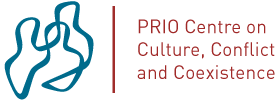Responding to Peer Review as an Early Career Scholar
Posted Monday, 21 Sep 2020 by Jørgen Jensehaugen
This week, PRIO is posting a series of blogs to mark Peer Review Week 2020. In today’s blog, Jørgen Jensehaugen draws on his own experience as an author, editor and reviewer to provide some advice to early career researchers in how to deal with peer review, highlighting challenges that can afflict early career researchers in particular.

The double blind peer review system is considered the gold standard of academic gatekeeping. It should not favor established academic superstars over young rookie scholars. As long as the research is sound, the reviewers should judge each piece according to its academic merit. However, theory and practice are not the same things, because while the peer review process is double blind, there are two non-blind actors involved in the process: the author and the editor.
A professional editor will not favor an article by an academic star over an article by a junior scholar, especially if the latter is in fact better. However, this is a choice that editors are faced with, because the publication pressure is so high that journals get more submissions than they can publish and they often get fewer good peer-reviewers than they need to make good judgements.
Learning from experience
I was fortunate to work in two journals early in my academic career. These experiences have come in handy when I have submitted to journals, because I had knowledge of how an editor thinks about reviews; how the best researchers respond to editors; and how editors balance the input from the editors and the reviewers.
Not all young scholars possess this knowledge, and it is common to hear early career scholars conclude something along these lines when they receive feedback from a journal:
- The reviewers disagree with each other so I cannot please both and hence this article cannot become publishable in this journal.
- The reviewers have so many comments and I must adapt to all of them, even the ones I do not agree with.
- The editor has said it is a revise and resubmit (R&R) but there is no way I can accommodate what the reviewers say, so this is actually a reject.
The truth is that editors want the best possible article and they want to be able to say to reviewers that their review was taken seriously by the author. If reviewers disagree, then adapting to both their reviews equally is most likely to result in an article that is neither good nor satisfactory to both reviewers. If pleasing one displeases the other, then trying to live up to the demands from both will create a hodgepodge article nobody is happy with.
So, what should an author do when faced with reviews?
Read the reviews carefully, adapt and respond
As an author you often know more about your narrow topic than the reviewers, but since they are gatekeepers, both the author and the editor must relate to their feedback. The question is how, and this is where the other two actors come in. Both the editor and the author must understand the balancing act in reading the reviews, setting them up against each other and considering whether a piece is publishable or not, and what should be done with it in order to make in publishable.
Although it is unfortunately not unheard of to receive unconstructive or unprofessional reviews, in most cases both the reviewers will have something substantive to say. Nevertheless, they will likely have differing opinions on your article, and you will not completely agree with their comments. This often results in a R&R with vague or no instructions from the editor as to what is expected beyond: these are the two reviews, please revise and resubmit accordingly.
At this point I always celebrate. Remember, two hurdles have been passed at this point: 1) the article was good enough to not be a desk reject by the editor; and 2) the reviewers’ comments and the editor’s reaction to their comments did not warrant a rejection.
The next thing I do is print the reviews and the article, and I open a blank document. This document is very important – it is the response letter to the editor. This is where you make the case that you have seriously taken into consideration the feedback from the reviewers. In this document you should highlight all the changes you have made, and you should take a scholarly stance on the changes you have not made.
Make notes in this document as you carefully read the reviews. Remember also to highlight all the positive feedback the reviewers give you. All of it! Relating to peer reviews can be a rough process so you will need all the positive energy you can get. Let the positive feedback sink in, then start paying attention to the criticism. This usually falls into four categories:
- Minor things that you agree with and that can easily be fixed: Start fixing these in the article immediately and note the changes in the letter to the editor.
- Major things that you agree with but that are going to take time to fix: Make a note of these and figure out where in the article the text has to be adapted to make those changes. Make a note in the draft letter to the editor that these are the real, substantive changes you are making.
- Minor things that you disagree with: Briefly note these in the letter to the editor. These are typically things the editor and the reviewer do not really care too much about, but they will want to see that you have considered them nonetheless.
- Major things that you disagree with: This is the real challenge, and this is where the letter to the editor becomes one of the most important documents in the R&R process. If you disagree with a major point, there should be a serious academic reason for why you disagree. Make that case! Prove to the reviewer and the editor that you have seriously pondered this point and that your research goes against that counter-argument. You might even consider highlighting the disagreement in the article. If you do this right, a professional editor should be able to conclude – ok, here we have a sound academic disagreement which is based on good scholarly work and the academic community can benefit from these differences.
Resubmit
Once you have revised the entire article and written a serious response, it is time to resubmit. The editor can then do a number of things which are beyond your control. He/she might simply serve as a judge by weighing the original article, the reviews, the argument in the response letter and the revised article against each other and conclude reject or accept. Alternatively, he/she can send the revised article with or without the letter to one or all of the reviewers to ask for their opinion on whether the revision has adequately lifted the quality of the article, or he/she might even appoint another reviewer to get an opinion on what this article looks like with fresh eyes.
My experience as an author, an editor, a managing editor, a member of an editorial board and as a reviewer is that the strength of the argument in the response letter has a significant impact on the editor’s decision at this point. My experience also indicates that a heavier burden falls on younger scholars to prove the merit of their case here since the editor-author relationship is not double blind. A well-established academic carries merit by the weight of his/her past accomplishments, whilst a young scholar must make the case only based on the article itself. This is one of the biggest weaknesses in the peer review process – but making a strong case in the response letter can go a long way.
Jørgen Jensehaugen is a Senior Researcher at PRIO. His research focuses on the history of the Arab-Israeli conflict.










